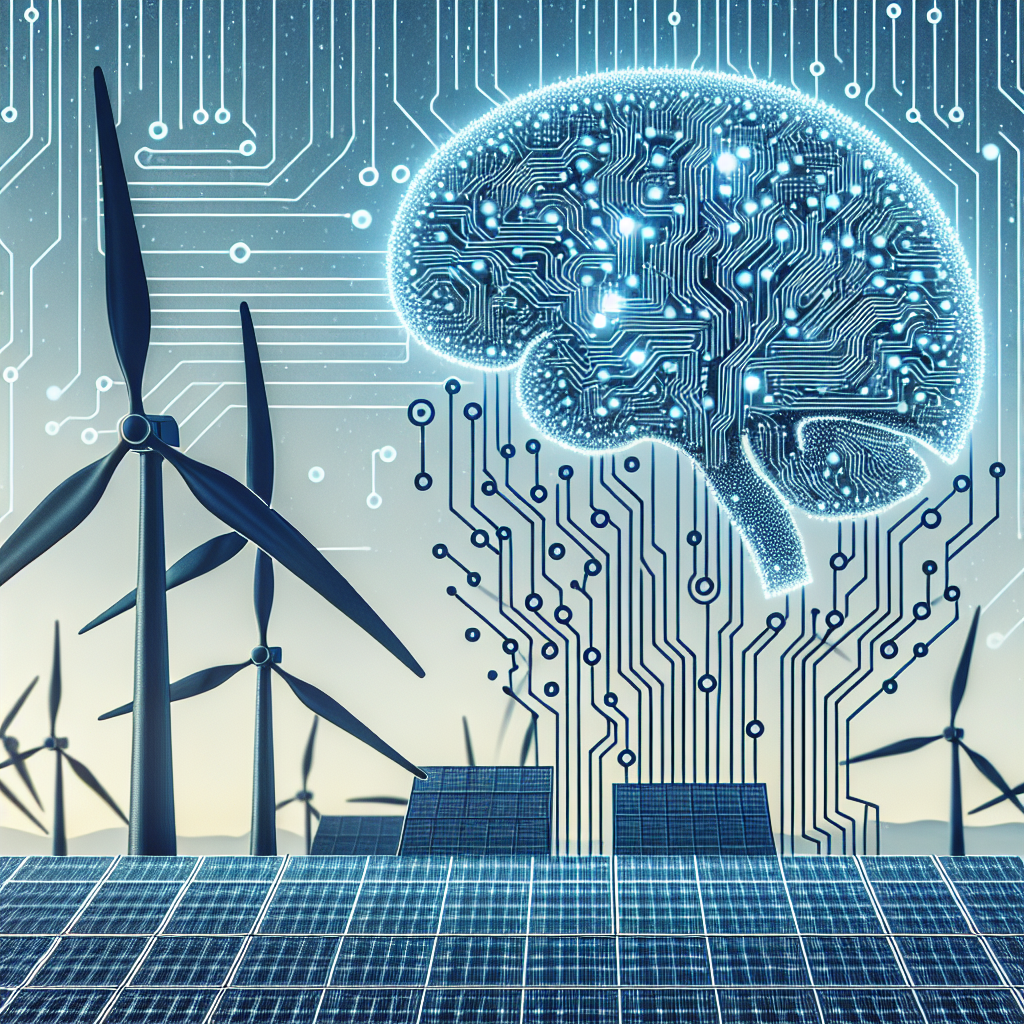The Future of AI-Driven Energy Trading Platforms for Renewables
In recent years, the energy sector has undergone significant transformation with the rise of renewable energy sources such as solar, wind, and hydro power. As more countries and companies commit to reducing their carbon footprint, the demand for renewable energy is expected to continue growing. At the same time, advancements in artificial intelligence (AI) and machine learning are revolutionizing the way energy is traded and managed.
AI-driven energy trading platforms are emerging as a key tool in optimizing the production, distribution, and consumption of renewable energy. These platforms use algorithms to analyze data from various sources, such as weather forecasts, energy production levels, grid demand, and market prices, to make real-time decisions on when and where to buy and sell energy. By leveraging AI, energy trading platforms can maximize the efficiency of renewable energy sources, reduce costs, and help balance supply and demand on the grid.
One of the key advantages of AI-driven energy trading platforms is their ability to predict energy production and consumption patterns with a high degree of accuracy. By analyzing historical data and real-time information, AI algorithms can forecast how much energy will be produced by renewable sources like solar panels and wind turbines, as well as how much energy will be needed by consumers. This enables energy traders to optimize their trading strategies, buy and sell energy at the most opportune times, and avoid costly imbalances on the grid.
Another benefit of AI-driven energy trading platforms is their ability to automate complex trading decisions. Traditional energy trading involves manual intervention and human judgment, which can be time-consuming and prone to errors. AI algorithms, on the other hand, can process vast amounts of data in real-time, identify patterns and trends, and execute trades automatically based on predefined rules and objectives. This not only speeds up the trading process but also reduces the risk of human error and improves overall efficiency.
Furthermore, AI-driven energy trading platforms can help optimize the use of renewable energy sources by integrating them into the grid more effectively. For instance, AI algorithms can predict when solar panels will generate the most energy based on weather conditions and adjust energy trading strategies accordingly. They can also help balance the grid by storing excess energy in batteries or diverting it to other locations where it is needed. This flexibility is crucial for integrating intermittent renewable energy sources into the grid and ensuring a reliable and stable energy supply.
In addition to optimizing energy trading, AI-driven platforms can also help reduce costs and improve profitability for energy companies and consumers. By analyzing market trends and price fluctuations, AI algorithms can identify opportunities for arbitrage and maximize profits from energy trading. They can also help energy companies reduce operational costs by optimizing maintenance schedules, predicting equipment failures, and improving overall asset performance. Ultimately, AI-driven energy trading platforms can increase revenue, reduce expenses, and drive greater value for all stakeholders in the energy sector.
As the adoption of renewable energy continues to grow, the role of AI-driven energy trading platforms is expected to become even more prominent in the future. These platforms will play a crucial role in managing the increasing complexity of energy systems, optimizing the use of renewable energy sources, and balancing supply and demand on the grid. By leveraging AI and machine learning technologies, energy companies can unlock new opportunities for innovation, efficiency, and sustainability in the energy sector.
FAQs
Q: How do AI-driven energy trading platforms work?
A: AI-driven energy trading platforms use algorithms to analyze data from various sources, such as weather forecasts, energy production levels, grid demand, and market prices, to make real-time decisions on when and where to buy and sell energy. By leveraging AI, energy trading platforms can maximize the efficiency of renewable energy sources, reduce costs, and help balance supply and demand on the grid.
Q: What are the benefits of AI-driven energy trading platforms?
A: AI-driven energy trading platforms can predict energy production and consumption patterns with a high degree of accuracy, automate complex trading decisions, optimize the use of renewable energy sources, reduce costs, improve profitability, and drive greater value for all stakeholders in the energy sector.
Q: How can AI-driven energy trading platforms help reduce carbon emissions?
A: By optimizing the use of renewable energy sources and balancing supply and demand on the grid, AI-driven energy trading platforms can help reduce the reliance on fossil fuels and lower carbon emissions in the energy sector. This is crucial for combating climate change and achieving sustainability goals.
Q: What is the future outlook for AI-driven energy trading platforms?
A: The future of AI-driven energy trading platforms looks promising, as the adoption of renewable energy continues to grow and the need for more efficient and sustainable energy systems increases. These platforms will play a key role in optimizing energy trading, integrating renewable energy sources into the grid, reducing costs, and driving innovation in the energy sector.

